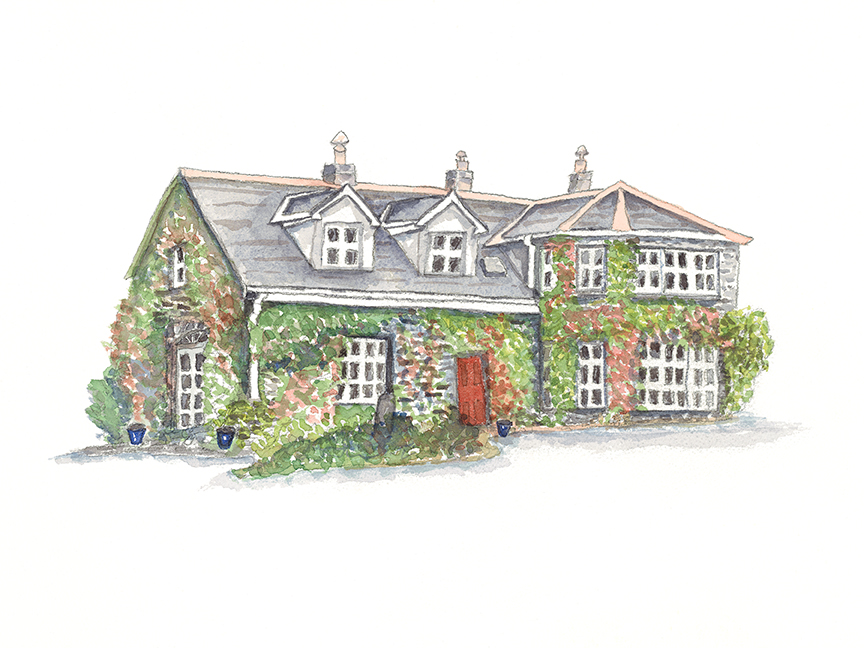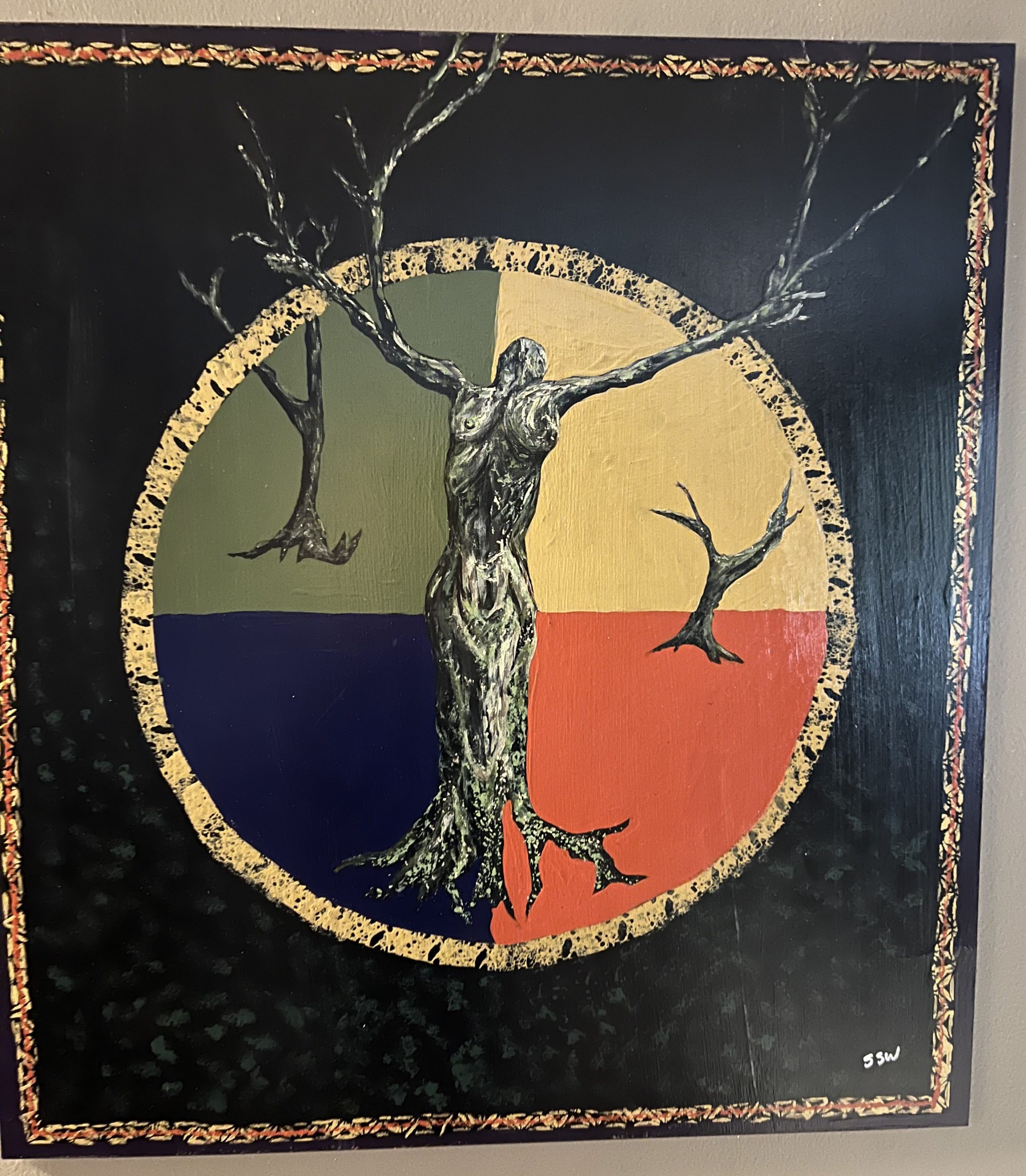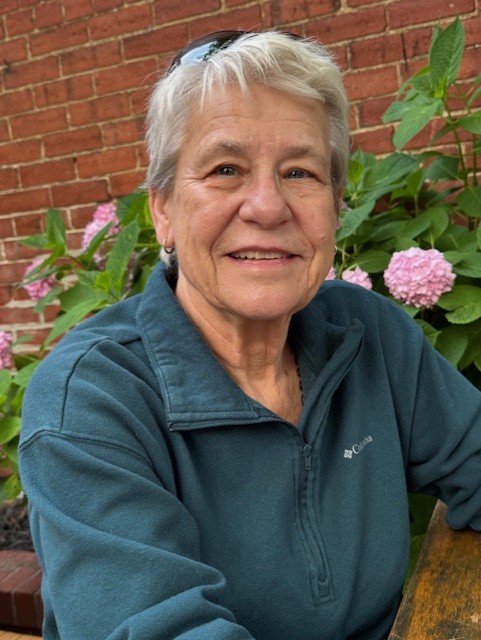May 21, 2025
The American Art Therapy Association represents a diversity of professionals, students, and organizations across the nation. We recognize and celebrate the work of our members at all levels through our Featured Member series.
What’s your engagement with AATA?
One day, as I limped into a podiatrist ‘s office seeking help for these old feet, I happened to look at the listing of occupants in the building. Whoa! the American Art Therapy Association lives in the same building! On my way out I stopped in at the AATA office to say hello. Immediately taken hostage by the staff, I was not allowed to leave the building until I renewed my “special retiree” membership and agreed to volunteer for a post-conference clean-up project. Okay, okay… I’m exaggerating, as I’m prone to do. It was probably the AATA gift (bribe?) of watercolor paint and paper handed to me as we visited. I mean, I’m an art therapist and don’t we just all grovel unabashedly when it comes to free supplies? Besides, I figured I owed AATA something since I had let my membership lapse lord-only-knows how many years ago. So here I am as a “featured member” and volunteer for AATA.
What excites you most about your job right now?
I am learning how to retire. That’s my job right now. I have been a personal and professional caregiver since I was a very little girl, so not working does not come naturally. I’m creating a new and different life making art, volunteering and continuing to make collaborative connections.
Has working with a particular client group shaped your professional focus or specialty? What have you learned from working with these clients?
First and foremost, I am a clinician. Prior to retirement, I practiced in rural, multicultural communities, both in Hawaii for 25 years and on the mainland before that, with all ages from elementary school age through geriatrics and everyone in between. Some consumers were adjudicated, at risk for incarceration and/or state psychiatric placement. Most were struggling with co-occurring severe and persistent mental illness and substance use disorders. In addition to direct care, I was part of the local mental health forensics team that interfaced with the judiciary on appropriate levels of care. I worked on local and state levels to help break down “silos” of care into which consumers often fall in the cracks, thus failing to receive needed care.

“In the hands of a well-trained therapist, there is no doubt the process of art-making is powerful, both clinically and personally. Art IS the inspiration. Art is our vehicle to bridge an understanding of the unthinkable, to express what sometimes cannot be expressed in any other way, whether to others or to ourselves. In the words of Georgia O’Keeffe,, ‘I found I could say things with colors and shapes that I couldn’t say any other way- things I had no words for.’
Connecting with other Art Therapists is important in the journey, especially if one chooses to work in communities where there may be few, if any, fellow art therapists. AATA helps provide those connections.”
— Sue Stone-Walls, MA. Retired ATR-BC, LMHC, CSAC
What advice would you give someone interested in pursuing a career in art therapy?
First, for folks considering entry into the Art Therapy field: make do with what you have. Hopefully, you will get lucky and have a fully supported space and materials in which to provide service. But you might not, especially in rural areas of the world. In Hawai’i (the farthest removed land mass in the world) I made do with what I had. Where I worked there were no dedicated spaces or materials with which to conduct art therapy. But there’s always a scrap of paper and a pencil, right? And maybe a closet full of files and a couple of boxes to sit on in the company of friendly “critters”. Or maybe an office to use for a consumer until the next person on the team needs that space. I am happy for and probably a bit envious of the opportunities I hear about now in which there are dedicated spaces, supportive institutions, and materials available for art therapists in their work.
Second, trust the process. This is often easier said than done. Our therapist egos are sneaky things. We all have them, and they want control. We like to maintain our plans, ideas and agendas. Too often we good people go into the field, thinking we will help others. And we do. But we also want to feel good about ourselves, as if we have the power to “help” make other lives “better.” We don’t. But we can “hold the space” for healing and expression to occur. Let art do and be what it does.

About Sue Stone-Walls, MA, Retired ATR-BC, LMHC, CSAC

Sue Stone Walls is a graduate of Southwestern College’s Master’s in Art Therapy program in Santa Fe, New Mexico. Master’s in Art Therapy. She has over 25 years experience practicing in rural, multicultural communities, primarily with those experiencing persistent mental illness or substance use disorders. She is now retired and spends her time making art and volunteering at AATA.
